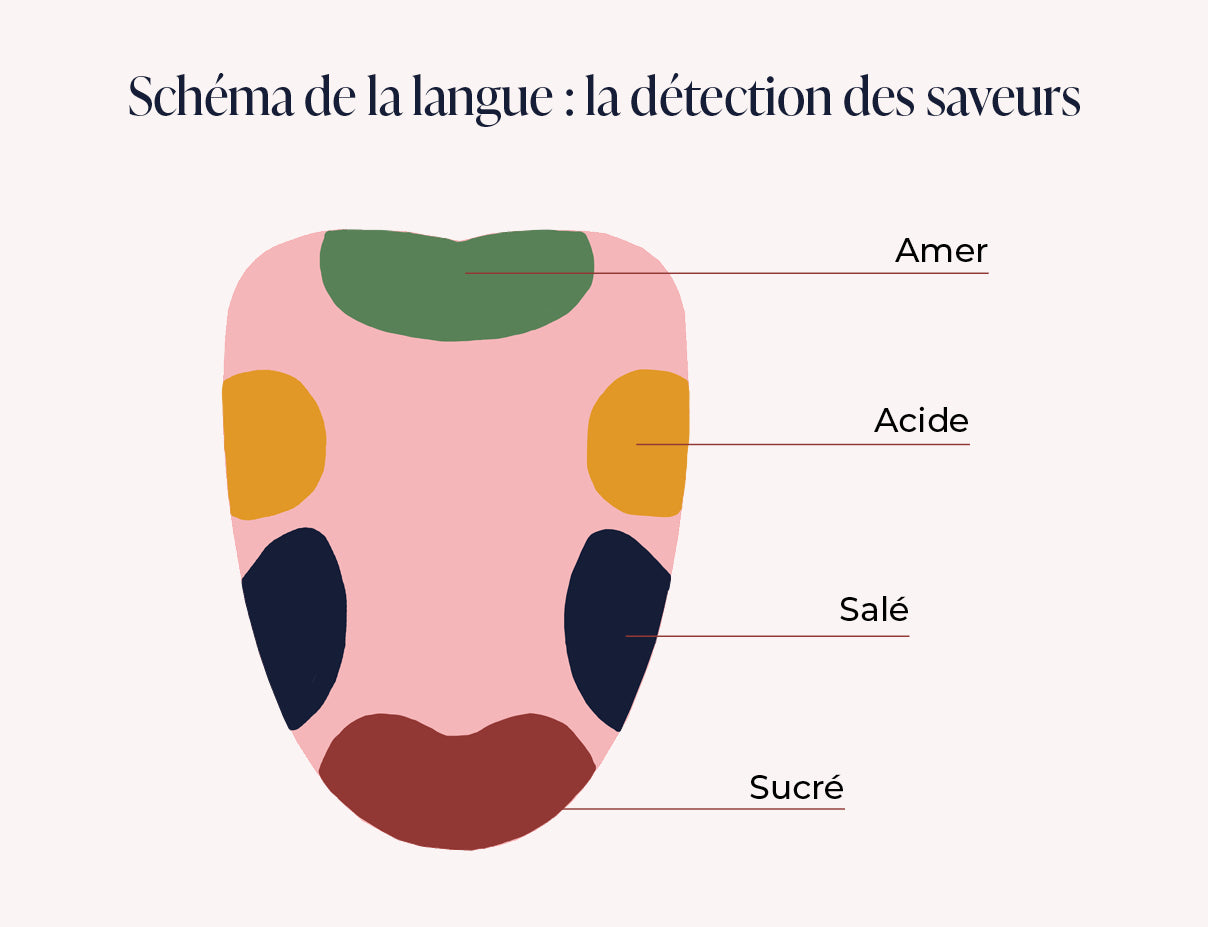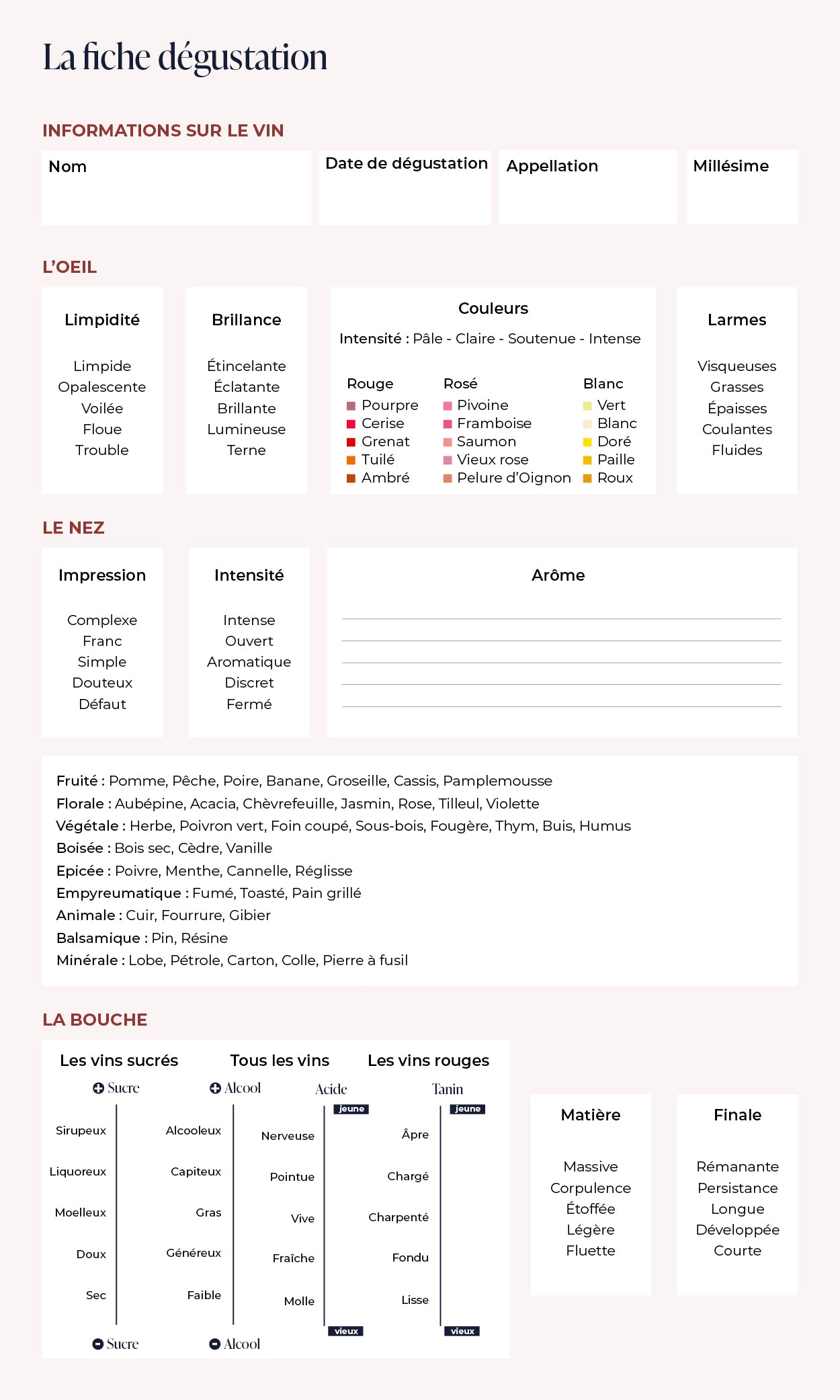Tasting
How do I make a wine tasting sheet?
A tasting sheet summarizes the various stages in the analysis of the wines on offer. It describes a wine's visual characteristics (brilliance, color, clarity), as well as its olfactory and gustatory elements. Aromas are also described.
Method: what should a wine tasting sheet contain?
Wine identification
Start by providing details of the wines to be tasted. Fill in the form:
- the name of the wine and the estate
- the appellation
- country/region of production
- the millesime
- the grape variety
The visual aspect of wine
Once served in the right glasses, first observe the color of the wines on your tasting menu.
- The color. Use the color chart to determine which color your wine is closest to. Observe its intensity. Is it pale, medium or intense?
- The clarity. Is the wine limpid, cloudy or even muddy?
- The viscosity. Examine the wine's tears (the drops along the side of the glass). Are they fluid, thick or viscous?
- The shine. Observe the ability of the wines served to reflect light.
The wine nose
After observing the wine from a safe distance, move closer. Now it's time to describe the olfactory expression of a wine's aromas - its nose. At this stage of the tasting, follow two steps: the first nose - the first olfactory contact - and the second nose (after swirling the glass to awaken the aromas). Observe:
- The intensity. Is the wine very aromatic - we'll say it's open - or, on the contrary, not very aromatic, in which case we'll say it's closed?
- The aroma trend. What trends do you detect? There's a whole oenological lexicon for translating wine aromas: fruity, floral, spicy, vegetal, woody, mineral...
The taste of wine
By following the tasting process and activating the aromas, you can then determine whether the wine is balanced, acidic, bitter, salty or sweet. The different parts of your tongue are sensitive to certain sensations and flavors. Combined with your gums and the rest of your mouth, they can detect taninns (for red wines only) thanks to their distinctive mouthfeel. When it comes to oenology, your taste buds aren't the only ones involved!
Analyze your first impression once you've tasted the wine.
- Intensity. Is it disappointing or intense?
- Acidity. Is the wine acidic or sweet?
- Tannins. Next, identify the intensity of the wine's tannins.
- Aromas. Determine the aromas you smell beyond the olfactory examination.
- Creaminess. Is the wine sweet? How do you determine its alcohol level?
- Length in the mouth. This is expressed in caudalies; one caudalie corresponds to one second.

La conclusion
The final step is to give your overall impression of the wine. Did you like it and why? How would you describe this wine? Summarize the previous steps.

Aveine's advice
Rinse your mouth with water between sips.
Why make a tasting sheet?
Drawing up a tasting sheet allows you to take note of every feature of a wine. It's also an excellent way of remembering a wine. So you can go back to your cards for each new tasting as a comparison, or when you're looking for food and wine pairings for an evening out. With the creation of wine cards, you can take your knowledge of the world of oenology to the next level, and pinpoint the profile of your favorite red and white wines.
Download your Aveine wine tasting sheet template
For your future wine tastings, Aveine has prepared a complete, step-by-step guide to all the characteristics you need to fill in.

